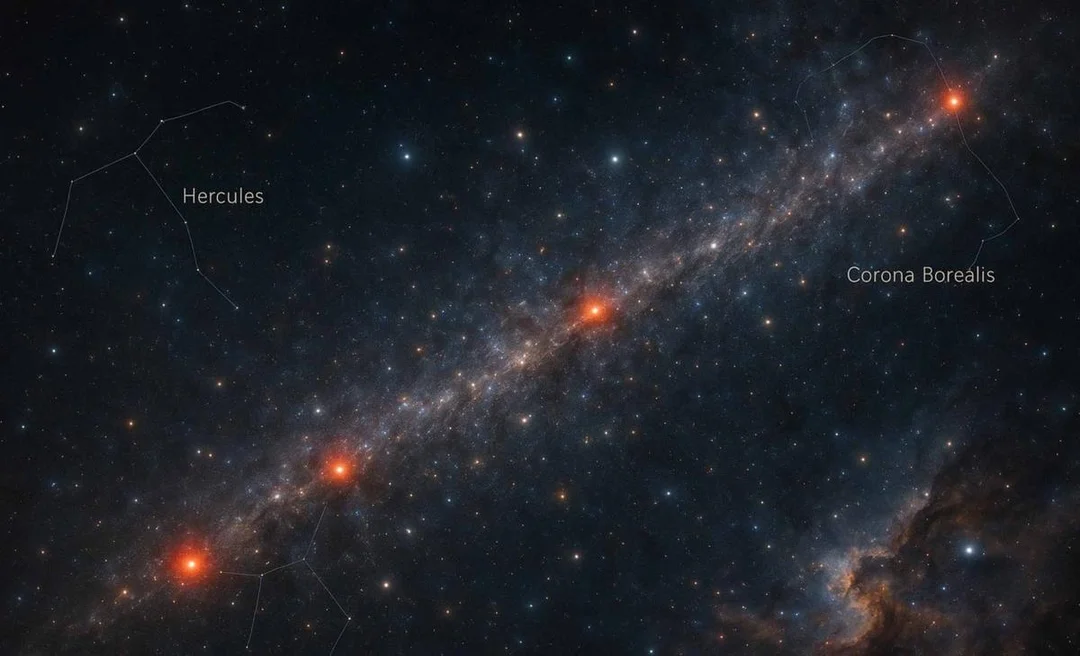
Cosmic ‘Great Wall’ Stuns Astronomers: Is the Universe More Complex Than We Thought?
Astronomers are grappling with a cosmic puzzle: the Hercules-Corona Borealis Great Wall, a structure so immense it challenges our understanding of the universe. Stretching an estimated ten billion light-years, this colossal formation is being re-evaluated and might be even bigger and closer than previously thought, sparking debate about the distribution of matter in the cosmos.
This discovery has ignited a furious debate within the scientific community. Some researchers consider it an anomaly that existing models cannot neatly explain, while others believe more data will eventually clarify its nature.

Dr. Jon Hakkila from the University of Alabama in Huntsville is at the forefront of this research. His team has meticulously examined gamma-ray bursts (GRBs) to pinpoint the boundaries of this immense structure. "It is larger than the size of most anything to which it might be compared," Dr. Hakkila stated, highlighting how the standard model of universal uniformity struggles to accommodate this sprawling formation.
Gamma-ray bursts are crucial to understanding cosmic distances. These powerful bursts, originating from supernova events or merging neutron stars, are detectable across vast distances. By tracking these bursts, astronomers gain insights into the distribution of matter, especially in regions that are difficult to study directly. Crucially, the team used 542 GRBs, half of which were located in a position on the sky to trace this particular structure.
The Hercules-Corona Borealis Great Wall isn't the only oversized structure to raise eyebrows. Other formations, such as the Sloan Great Wall, the Huge Large Quasar Group, and the Giant Quasar Arc, have also challenged established cosmological boundaries. However, the Hercules-Corona Borealis Great Wall dwarfs them all, being about twenty-five times the size of the Sloan Great Wall. The recent discovery of the Giant Arc & Big Ring by Dr. Alexia Lopez further challenge the cosmological principle. According to the BBC Lopez said she thought it was a joke when she heard Sir Roger Penrose contacted her, fascinated by her findings. He later cited Ms. Lopez's work in his publication The Physics of Conformal Cyclic Cosmology.
Some scientists remain cautious, suggesting that the current GRB dataset may be incomplete, and potential errors in burst positions and redshifts could create the illusion of larger structures. Sampling bias due to observational limitations also complicates the picture.
"The jury is still out on what it all means," Dr. Hakkila admitted. While some models can potentially accommodate such a massive structure, others fall short. The limited amount of GRBs with known distances also acts as a hurdle.
Future missions like the proposed European THESEUS (Transient High Energy Sky and Early Universe Surveyor) could revolutionize our understanding. With its enhanced sensitivity and wide field of view, THESEUS could detect thousands of new gamma-ray bursts, potentially mapping the full extent of the Hercules-Corona Borealis Great Wall or disproving its current dimensions.
Ultimately, understanding the true extent and nature of the Hercules-Corona Borealis Great Wall could force a reevaluation of large-scale cosmic structures and potentially rewrite our cosmic maps.
What do you think? Is the universe far more complex and interconnected than we previously imagined? Leave your thoughts in the comments below and share this article with your friends!